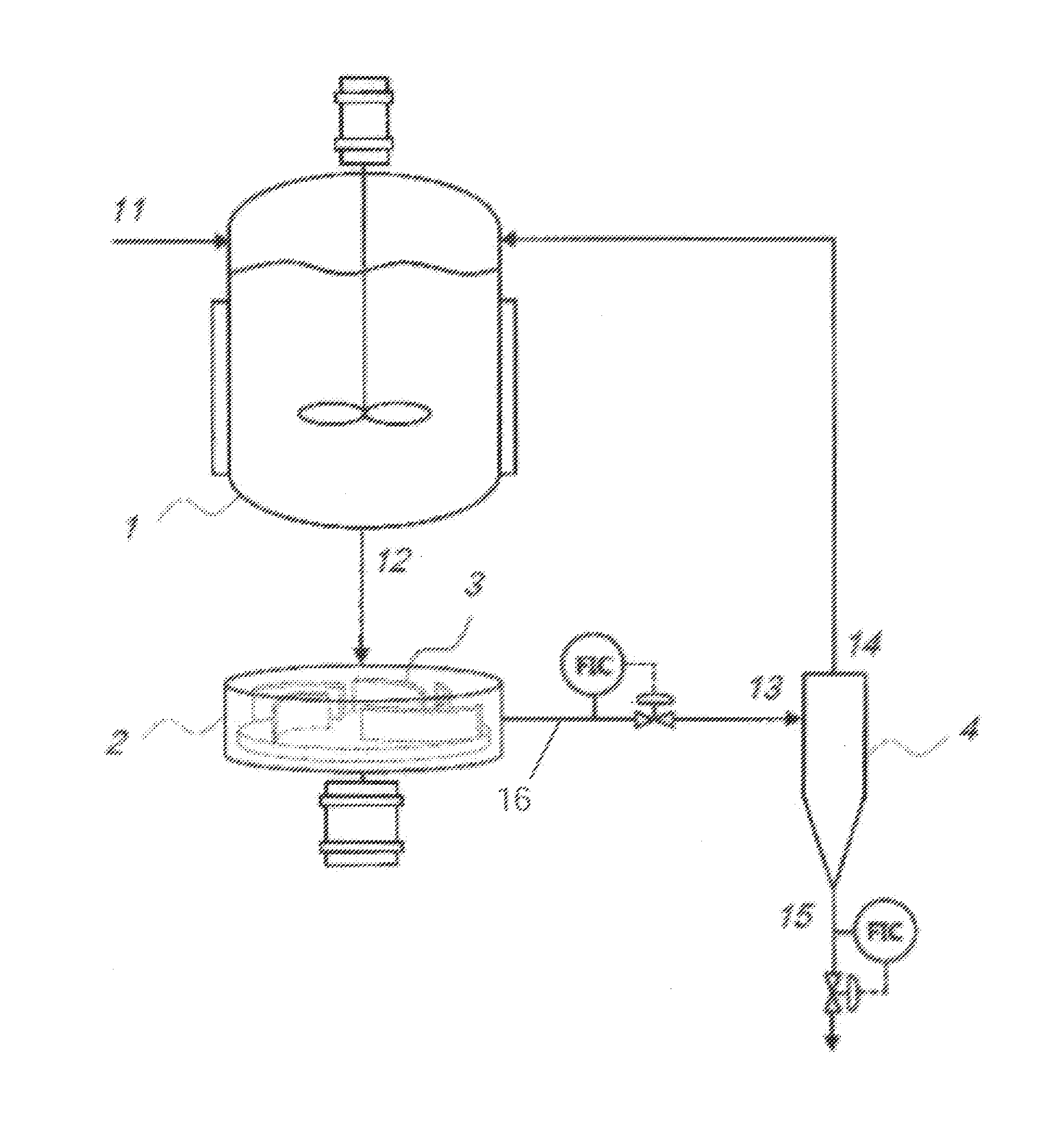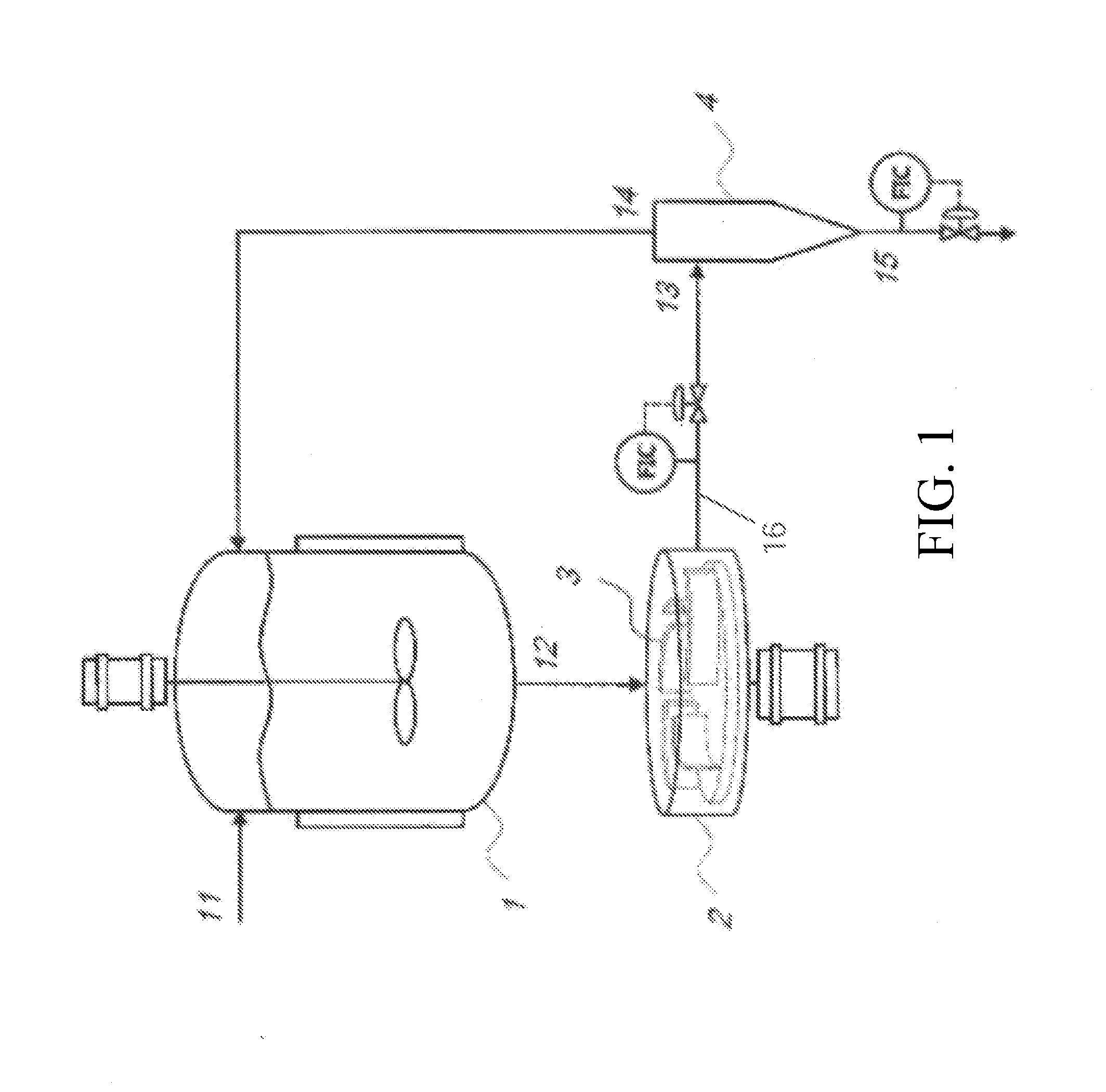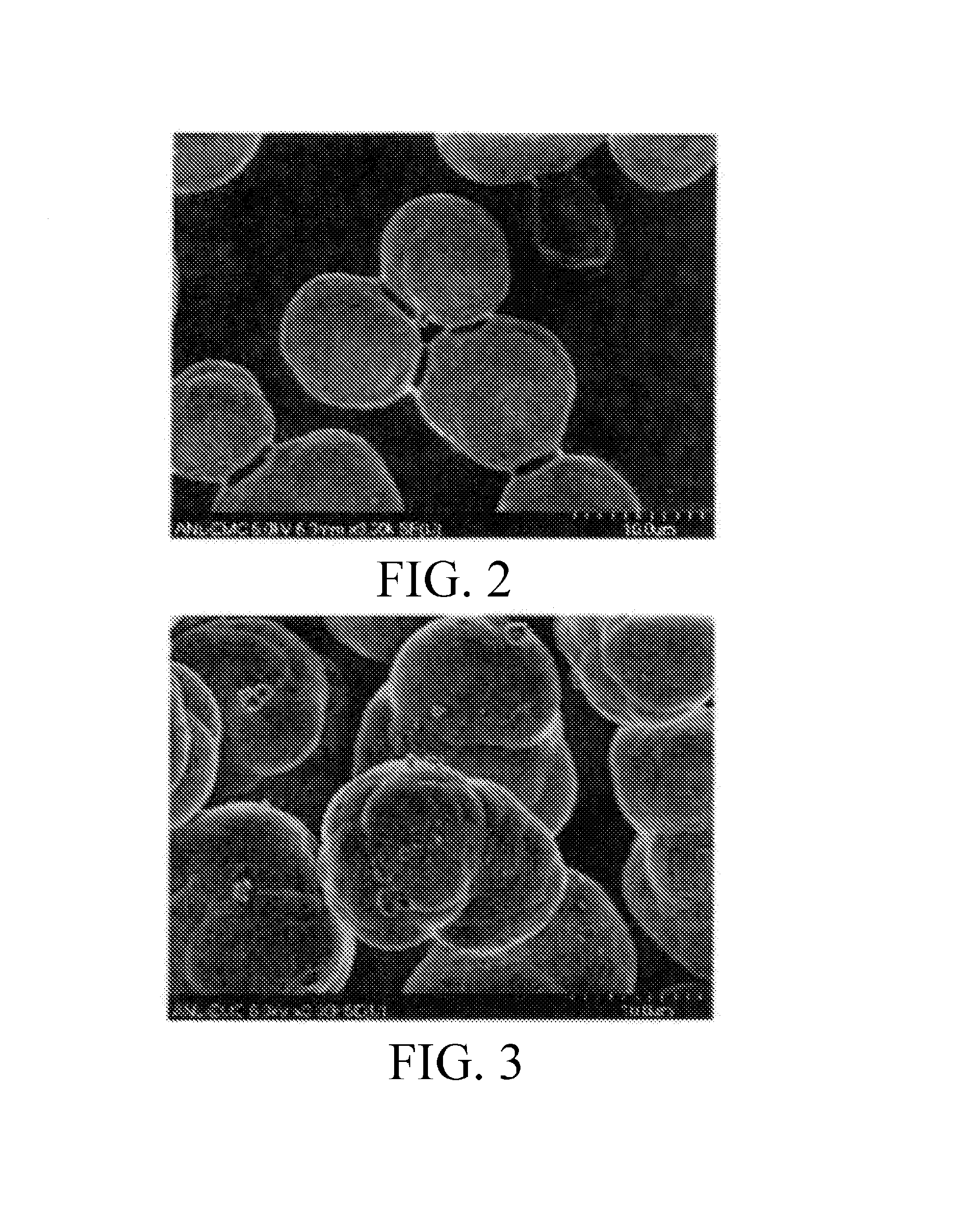Method for producing size selected particles
a technology of selected particles and size, applied in the direction of cobalt carbonates, cobalt compounds, cell components, etc., can solve the problems of reducing the performance of lithium secondary batteries, reducing the tap density, and elusive uniformed sized particles themselves, so as to improve the quality of the product, increase the energy density, and increase the tap density
- Summary
- Abstract
- Description
- Claims
- Application Information
AI Technical Summary
Benefits of technology
Problems solved by technology
Method used
Image
Examples
example 1
[0071]A metal solution prepared using nickel sulfate and manganese sulfate, sodium carbonate solution and ammonia solution were fed into a 20 L CSTR with centrifugal disperser and hydrocyclone. The molar flow rate of NiSO4, MnSO4, Na2CO3, and NH4OH are 3.25 mol / hr, 6.5 mol / hr, 10.8 mol / hr, and 1.1 mol / hr, respectively. The ratio of metal solution to alkaline solution is approximately 1:1.2. The residence time in the reactor was approximately 2 hours and reaction temperature was approximately 50° C. This shows that the invention generates size- and morphology-controlled particles (uniform, small and spherical) in the same amount of residence time that state of the art systems take to produce inferior particles (i.e., particles exhibiting varying sizes and morphologies) with the same starting materials. Flow rate of the centrifugal disperser inlet stream was about 1 L / min and the flow rate of desired-size particle solution outlet stream was 25 percent of the tiny particle solution ret...
example 2
[0073]Rotation speed of the centrifugal disperser was varied while all other operations variables maintained as in Example 1. When 1000 RPM was applied to the centrifugal disperser, the average particle size of nickel manganese carbonates produced was about 22 μm. Then the rotation speed was increased to 2000 RPM, the average particle size was about 15 μm. When the rotation speed was increased to 3000 RPM, the average particle size was about 8 μm
[0074]A density of distribution graph of nickel manganese carbonates produced by the CSTR when the centrifugal disperser's speeds are varied between 1000 and 3000 RPM is illustrated in FIG. 7. SEM images of the electrode active materials which results for the lithium secondary battery by 20 L CSTR with centrifugal disperser and hydrocyclone using these precursors are shown in FIGS. 8-10.
Reduced Wastewater Embodiment
[0075]In the first embodiment of the presently invented system as depicted in
[0076]FIG. 1 and discussed above, the tank reactor ...
example 3
[0080]The reactor tank 1 is fed by a 1M metal solution from feed stream 11 at about 1L / min and by a 0.6M alkaline solution at 2 L / min from ingress line 19. The ratio of metal solution to alkaline solution is maintained at about 1:1.2. The solutions are mixed in the reactor tank 1 and delivered to the centrifugal dispenser 2 via conduit 12. The mixture leaves the reactor tank 1 at a volumetric rate of 3 L / min as opposed to the 4 L / min of the previous embodiment; however, the total number of moles of reactants is the same.
[0081]The mixture from the centrifugal dispenser 2 is provided to the particle separator 4. Like the previous embodiment, a solution containing small particles is returned via return line 14 at a rate of 2 L / min. Thus, the product solution is provided at a rate of 1 L / min, but the solution contains a greater density of the desired size particles. Because a lesser amount of product solution is created, less water is wasted in the recovery of the desired particles.
[008...
PUM
 Login to View More
Login to View More Abstract
Description
Claims
Application Information
 Login to View More
Login to View More - R&D
- Intellectual Property
- Life Sciences
- Materials
- Tech Scout
- Unparalleled Data Quality
- Higher Quality Content
- 60% Fewer Hallucinations
Browse by: Latest US Patents, China's latest patents, Technical Efficacy Thesaurus, Application Domain, Technology Topic, Popular Technical Reports.
© 2025 PatSnap. All rights reserved.Legal|Privacy policy|Modern Slavery Act Transparency Statement|Sitemap|About US| Contact US: help@patsnap.com



